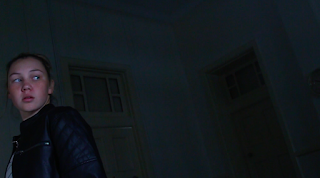Entry 1- First Day of Media Arts
Today, we went through some of the key ideas on how to make a film good.
Just like Visual Art, when it comes to creating films, they have specific terminologies that enable a film to be a good one. In Visual Art, we call them Visual language. In film, we call them Film Language. Without Film Language, a film will probably be lifeless. That's how important a film language is.
In class we discussed some of the key focuses in a film language.
Acting: Acting and the actors that we choose for the film is vital, as their acting may bring the film to success or bring the film down. Mr Andrew told us that one of his friends acting was too good that it made all his other actors look bad, so he was forced to edit out most of her scenes.
Props and Costumes: Props and Costumes brings the scenes to life, as they help the scenes to look more realistic. If everyone is wearing a costume that does not match with the setting (i.e Everyone is wearing cowboy suits in Ancient China), it will not help in capturing audiences hearts. The props also helps with the storyline or even the setting of a character or a place. For example, if a person is holding a gun, it indicates that that person in powerful.
Mood + Textures and Colours: Usually the Colour scheme of a scene helps set the atmosphere. For example, Mr Andrew showed us a couple of photos which showed city buildings with neon colour signs. Although the neon colours acted as a light source, the overall brightness of the picture was very dark (No natural light). This enabled the neon colours, which were blue and purple to seem sad and moody. In addition, in one of the pictures, it was pouring rain, which added the effect of hollowness and dystopian mood.
Lighting and Exposure: Lighting can change the quality of the film. If the lighting work is amateur, the highlights and the shadows of the person will come out dodgy. If the lighting work is good, the lighting will help you deliver a certain message towards the audience.
SPX, SPFX and FX: Special Effects are often used in movies to enhance a specific object or to create something that is not there in actuality. This is often used in genres that are fictional. Green Screening is a main example of special effects.
Angles, Position and Motion (Panning, Tilting and Dolly): The angle of the camera, the positioning of the camera and the motion movement of the camera helps position the leader to know what the director wants to convey. For example, a dolly long shot is used when The Golden Trio were running through the forest while being chased by the bandits. The long shot obviously helped the viewers to see that the forest was deep, and the dolly shot enabled the audiences to understand that they were trying their best to get away.
Soundtrack: The Soundtrack also helps in the creation of the mood of the scene. For example, a soft violin sound may create a sad mood, but a loud drumming sound may signify that danger is coming. It can skilfully create suspense.
Script and Narrative: This creates the overall story of the film. The backbone of the film.
Shot: A shot is a short video that usually lasts from 1-10 secs.
In addition to all that, we also briefly discussed this term's assignment, which was a silent film. This is going to be a real challenge, as it means that we have to convey all our messages through film techniques. I, however, am still excited to take on the challenge.


Comments
Post a Comment